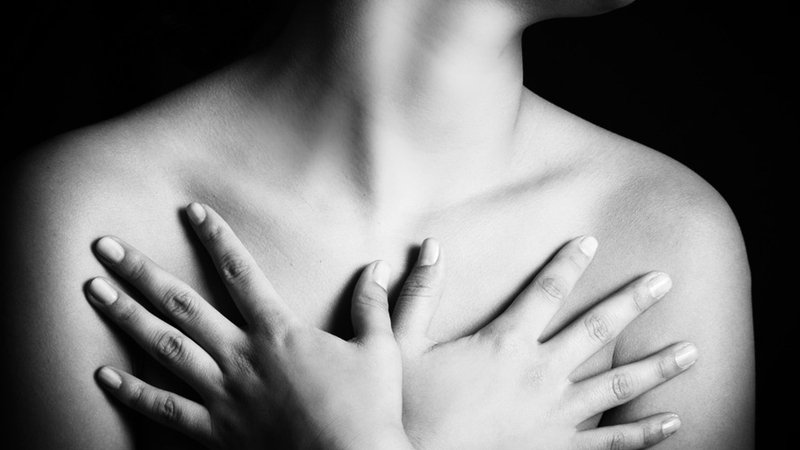A problem which women of all age groups face is breast pain or mastalgia. It is so common that almost 2 out of 3 women who are still pre-menopausal, experience it at some point in their life. Many women may wonder the question "why are my boobs sore?" Breast pain falls in two main categories – cyclic pain and non-cyclic pain. Cyclic pain is associated with menstrual cycles and non-cyclic one can be caused by various reasons like breast injury, some tissue or muscle pain around the breast.
The breast pain can vary in intensity – it can be like sharp pain or a mild tingling. The pain can also be described as having breast tenderness or feeling fuller than usual. The pain can be felt in the outer part of the breasts, upper area or even extend from the breast area to the armpits, down the arms as well. Severe breast pain which lasts long can affect daily activities and increase anxiety, depression and reduce the overall quality of life.

Why Are My Boobs Sore?
Cyclic Pain
The breast pain associated with the menstrual cycle is considered normal and happens during the time of periods. It is seen in both the breasts and occurs intermittently. This type of pain is not associated with any other type of breast conditions.
The breast pain occurs usually 1 to 3 days before the onset of periods and stops when the periods end. But the intensity of the pain is not the same every month. Estrogen and progesterone are two hormones which control the menstrual cycle in the body. The balance of these hormones is important, and they bring about a lot of changes in the body.
Breast pain usually affects women who are pre-menopausal. Some women who have achieved menopause, but are undergoing hormone replacement therapy can also experience cyclic breast pain.
Noncyclic Pain
If you do not experience breast pain due to the causes mentioned above, you might wonder "why are my boobs sore?" Non-cyclic breast pain is seen commonly in women in the age of 30 to 50 years. It usually occurs only in one breast and can be described as tightness, burning pain or sharp pain. The pain might occur either intermittently or constantly.
Sometimes it becomes difficult to diagnose the exact cause of non-cyclic pain. It can be caused due to variety of conditions like:
Stress
Ill-fitting bra - It does not provide adequate support or doesn’t fit well
High intake of caffeinated products - These products include tea, coffee, cola, chocolate and energy drinks
Weight gain -This condition makes the breasts heavy
Injury of breast or chest - Strain on the chest, shoulders or pectoral muscles or scars from surgery
Side effects of medicines - These include contraceptive pills, cholesterol medication, anti-depressants, anti-fungals or anti-psychotics
Mastitis - In this condition, the breast tissue becomes painful and gets swollen. It is usually associated with breast-feeding
Lumps in the breast - Presence of lumps in the breast which are benign or non-cancerous can be very painful
Abscess in the breast - In this condition, there is formation of pus in the breast
Cysts or fibroadenomas in the breast
Other health conditions that affect the chest wall, ribs, and muscles below the breasts
What Are the Treatments for My Sore Boobs?
Dietary and Lifestyle Changes
Making the following changes in the diet and lifestyle can help improve the intensity of breast pain:
Eat a low-fat and high fiber diet (reduced processed fats).
Reduce the intake of caffeine and alcohol.
Add plenty of fruits and vegetables in the diet.
Maintain proper weight and exercising regularly.
Ensure that you wear a well-fitting bra which provides adequate support during the day and night.
Cyclic breast pain can be reduced by relaxation therapy which involves using relaxation tapes.
If the pain is associated with contraceptive pills, the brand should be changed or the dosage should be reduced. If it does not work, non-hormonal contraceptive method should be tried like condoms or diaphragm.
Primrose oil or starflower oil is recommended, however it should be avoided during pregnancy or when trying to conceive. You can also try gamma linolenic acid which is found to be beneficial in reducing the pain. It is advisable that you should consult your doctor before taking any of them.
Take Medications
Anti-inflammatory medicines: These drugs can provide relief from some cases of non-cyclic breast pain. However, the dosage and duration should be advised by a doctor. The doctor will consider the side effects and presence of other conditions like asthma or ulcers before advising the medicine.
Hormone drugs: When no other treatment method works, hormonal therapy is recommended. Danazol is used to treat breast pain, but has side effects and should be given only after careful consideration of benefits and risks.
When to See a Doctor
If any of the following breast changes are noticed, see your doctor immediately:
Nipple rash
Sunken nipples
Dimpling of breast skin
Presence of lump or thickened tissue in breasts
Discharge from nipples with presence of blood
Presence of lump or swelling in the armpits
Changes in the shape or size of the breasts
Breast infection along with redness, swelling or fever

View All Comments /Add Comment